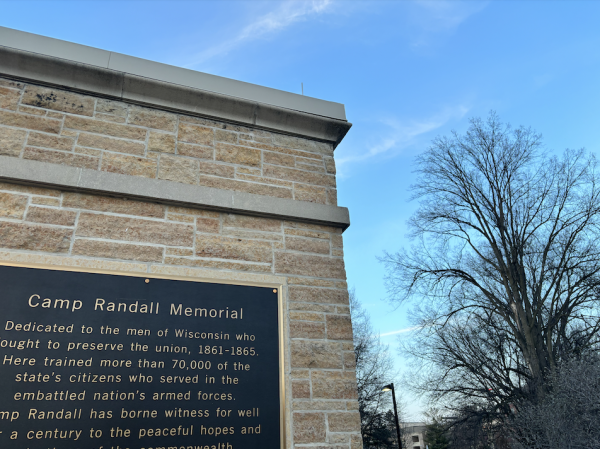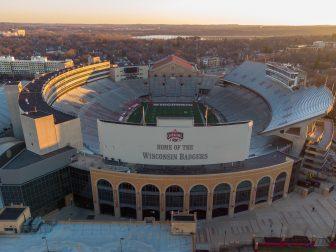The University of Wisconsin currently enrolls 887 student veterans and 2,004 students who are children or spouses of veterans, making up nearly 6% of the student population, according to University Veteran Services.
On average, student veterans are six years older and 2.5 times more likely to be first generation college students than their UW peers, according to UVS. Up to one third may be dealing with invisible wounds like PTSD, traumatic brain injury, major depression and anxiety, according to the U.S. Department of Veteran Affairs. As a result, seeking a degree as a student veteran comes with unique challenges.
Student Veterans of America President and UW student Abygail Boyle enlisted in the U.S. Air National Guard after her freshman year in order to better afford her degree. After months of training in the Firefighter Academy, Boyle deployed in the Middle East for seven months, before returning to UW as a sophomore, a transition that she says was jarring.
“That acclimation to classes and just normal life outside of the military was very difficult, and very weird,” Boyle said. “I was in a combat zone, so flying home, landing Saturday, Sunday, packing up all my belongings … and then I’m in a 200 person the next day — very different environments and a lot whiplash.”
UW has a long history of honoring and accommodating veterans, but since the Vietnam War, support for student veterans has cooled, according to retired U.S. Air Force Lt. Colonel and current UW PhD student Jim Gingras.
Today, the three ROTC programs occupy separate buildings on the far side campus, according to Alexis Brooks, who is currently on active duty with the Navy and studying at UW through the Seaman to Admiral 21 program. According to Brooks, the poor condition of the Navy ROTC building and the physical separation between ROTC branch buildings has exacerbated the difficulty of connecting with other student veterans and military affiliated students.
“I feel like community is such a big part of being successful for veterans and military affiliated students,” Brooks said. “And personally, I only know other ROTC people through the Scabbard and Blade organization on campus.”
Today, the only dedicated student veteran locations are in the Student Activity Center on East Campus Mall, where Student Veteran Services maintains a five person operation on the 10th floor, and the Student Veterans of America club space on the 3rd floor.
Gingras, Boyle, and a panel of experts from the Middleton Memorial Veteran’s Hospital all said that creating a sense of community and camaraderie between student veterans was the most important factor in easing the transition from military to civilian life. Despite this, only a small number of student veterans and military affiliated students on campus have made their way to SVA, according to Boyle.
“There are hundreds of military and military affiliated students on this campus, but I would say we see the same core group of about 30 people shuffle through here in the week,” Boyle said. “I feel that if we had a space that was just dedicated to veterans … a place that you look at and say, ‘that is the veterans building, or that is the military affiliated building,’ we think that core group would grow tremendously.”
To help solve this problem, student veterans are hoping to see themselves included in the recently approved $285 million Football Indoor Practice Facility project, which will include replacement of the Camp Randall Memorial Sports Center, known as the Shell.
As part of their approval of the indoor practice facility, the Wisconsin Legislature mandated that the UW System Board of Regents submit a plan to honor Wisconsin veterans to the Board of Veterans Affairs by June 30, 2024.
Although a plan has yet to be determined, Gingras hopes to see UW build a centralized location where student veterans and military affiliated organizations across campus can all gather under one roof.
Gingras has proposed plans for a 72,000 square foot building, with space enough for ROTC, UVS, SVA, and an open air museum, for only 10% of the cost to build the indoor training facility.
The Board of Regents did not respond to an inquiry about what plans they might present to the Board of Veteran Affairs come June 30 at the time this article was published.
In the meantime, the student veteran experience at UW stands to be improved simply by creating a more uplifting culture on campus for student veterans and military affiliated students, Boyle said.
“Pick their brain, ask them questions, even if you think it’s silly or whatnot because no matter what your opinion on the military is, if you ask questions that you want to ask, it destigmatizes things,” Boyle said. “I think a lot veterans would say, ‘I’d like to share my story. I’d like to talk about what I’ve done and what I do, because it’s something that I’m actually very proud of.'”














